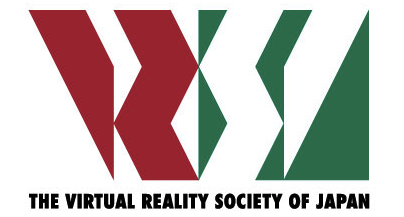





JST Week
For detail information: https://www.isvri2011.org/JSTevent/index.html
Japan Science and Technology Agency (JST) is an integrated organization to promote research activities in science and technology in Japan. Also one of the missions of JST is to promote joint research collaboration between Singapore and Japan. We have tried to plan for a long time to organize an event here in Singapore to introduce the recent research activities in the virtual reality (VR) and related areas and also several research collaborations going on between Singapore and Japan.
Fortunately IEEE Virtual Reality 2011 (VR2011), the most prestigious conference in VR will be held in Singapore on 19 – 23 March 2011 at SUNTEC Convention Centre. We are proud to inform that we will organize JST Week in conjunction with this conference.
We plan to organize various events including lectures to experts, talks to Singapore public, demonstrations, etc. We hope you would join the event, observe the recent research development in VR area, and would understand that VR technologies would give strong impact to the future of our life.
Keynote1: The Future of Head-Mounted Displays
Henry Fuchs |
 |
-- March 20 Sunday, 9:45-10:30
From its birth in the 1960s, Virtual Reality has been closely dependent on the availability of certain specialized technologies: real-time image generation, real-time tracking, miniature displays. Lack of these technologies made the initial attempts, beginning in the late 1960s, so difficult that only a few experimental systems were built until the late 1980s, when a combination of pocket TVs (which could be used for head-mounted displays) and real-time graphics workstations enabled an actual field called "virtual reality" to emerge. In the 1990s, the widespread availability of graphics-enhanced PCs and miniature displays fueled the VR boom of that decade. Affordable video projectors in the late 1990s enabled room-sized immersive environments. In the past few years smart phones with cameras, accelerometers and other sensors have spawned a boom in augmented reality applications on such devices. The latest promising device, the Microsoft Kinect depth camera, introduced in November 2010, may fuel the next expansion in VR systems and applications. Its real-time depth and color imagery, combined with affordability and easy interfacing, has inspired a following of experimentalists within days of its availability. It enables interaction with a local user's body without the user needing to wear (or hold) any encumbrances, and its real-time depth and color imagery enables 3D scene capture for augmented reality and telepresence applications. With this recent history of new technologies reinvigorating the field, VR is in a transition, from only a few systems being built, with enormous resources and heroic effort, toward a situation in which the necessary resources are so inexpensive that even individuals can personally fund and develop experimental VR systems -- from a situation in which most can only admire systems from afar, to one in which anyone can readily replicate another's work and build new ideas on top of it. It is this explosion in the size and vigor of the community that promises to transform VR from a minor media curiosity to a field with major creative, technical, economic, and societal impact.
Keynote2: The Future of the CAVE
Prof. Thomas DeFanti |
 |
-- March 20 Sunday, 11:00-11:45
CAVE, a walk-in virtual reality environment typically consisting of 4-6 3m-by-3m sides of a room made of rear-projected screens, was first conceived and built twenty years ago, in 1991. In the nearly two decades since its conception, the supporting technology has improved so that current CAVEs are much brighter, at much higher resolution, and have dramatically improved graphics performance. However, rear-projection-based CAVEs typically must be housed in a 10m-by-10m-by-10m room (allowing space behind the screen walls for the projectors), which limits their deployment to large spaces. The CAVE of the future will be made of tessellated panel displays, eliminating the projection distance, but the implementation of such displays is challenging. Early multi-tile, panel-based, virtual-reality displays have been designed, prototyped, and built for the King Abdullah University of Science and Technology (KAUST) in Saudi Arabia by researchers at the University of California, San Diego, and the University of Illinois at Chicago. New means of image generation and control are considered key contributions to the future viability of the CAVE as a virtual-reality device.
(From DeFanti, et. al., "The Future of the CAVE," CEJE(1).)
--------------------
For general information about the symposium, please contact the general co-chairs:
- Hyun Seung Yang, (KAIST, Korea)
- Zhigeng Pan, (Zhejiang University., China)
- Yasuyuki Yanagida, (Meijo University., Japan)
-
Adrian Cheok, (NUS, Singapore)
ISVRI-all@googlegroups.com

 Program
Program





















